Huge cracks appear on roads in Icelandic town at risk of volcanic eruption
Fears an Icelandic volcano will erupt remain high as magma spreads underground and huge cracks appear in the roads of a town most at risk.
Seismic activity in southwestern Iceland decreased in size and intensity on Monday, but the risk of a volcanic eruption remained significant, authorities said. Around 900 earthquakes hit the south of the country on Monday, with tens of thousands of tremors reported in the region of Reykjanes in recent weeks.
Almost 4,000 people were evacuated from Grindavik over the weekend as authorities feared that molten rock would rise to the surface of the earth and potentially hit the coastal town and a geothermal power station.
However, police in Suðurnes on Monday decided to give residents until 4pm to collect necessities from their homes.
Shocking images and footage have emerged showing roads split apart nearby, as their surfaces crack and buildings buckle under the pressure of the underground magma that has spread in recent weeks.
Experts said a nine-mile river of magma running beneath the peninsula was still active.
“All roads to Grindavik are closed and traffic on them is forbidden,” the Road Administration of Iceland wrote on Facebook, sharing footage of the damage.
Could an Icelandic volcano ground flights like in 2010?
Q Given the volcanic situation in Iceland, is it going to be another 2010 in aviation?
A As I write, the Reykjanes peninsula, southwest of Reykjavik, is seething with seismic activity. Grindavik, a town of nearly 4,000 inhabitants, was evacuated on Saturday as experts assess the threat of a volcanic eruption. Iceland’s main international airport, Keflavik, is just 10 miles north of the town. Yet flights are operating normally, which some may find surprising.
In April 2010, the Eyjafjallajokull volcano erupted and caused a complete shutdown of aviation for a week. Anyone who has a flight booked imminently may be fretting about a possible repeat. Thankfully, the circumstances are very different. Eyjafjallajokull erupted with a glacier on top. The addition of melting water meant that the lava cooled very quickly into tiny fragments. These were promptly propelled into the atmosphere to a height of 30,000ft by the steam produced in the eruption. A quarter of a billion cubic metres of volcanic ash were ejected and carried southeast towards the UK and continental Europe by the breeze.
Read more here:
Inhabitants of Grindavik describe being whisked from homes
Inhabitants of Grindavik described being whisked from their homes in the early hours of Saturday as the ground shook, roads cracked and buildings suffered structural damage.
Hans Vera, a Belgian-born 56-year-old who has lived in Iceland since 1999, said there had been a constant shaking of his family’s house.
“You would never be steady, it was always shaking, so there was no way to get sleep,” said Vera, who is now staying at his sister-in-law’s home in a Reykjavik suburb.
“It’s not only the people in Grindavik who are shocked about this situation it’s the whole of Iceland.”
Almost all of the town’s 3,800 inhabitants had been able to find accommodation with family members or friends, and only between 50 and 70 people were staying at evacuation centres, a rescue official said.
Some evacuees were briefly allowed back into the town on Sunday to collect belongings such as documents, medicines or pets, but were not allowed to drive themselves.
“You have to park your car five kilometres from town and there’s 20 cars, huge cars from the rescue team, 20 policemen, all blinking lights, it’s just unreal, it’s like a war zone or something, it’s really strange,” Vera said.
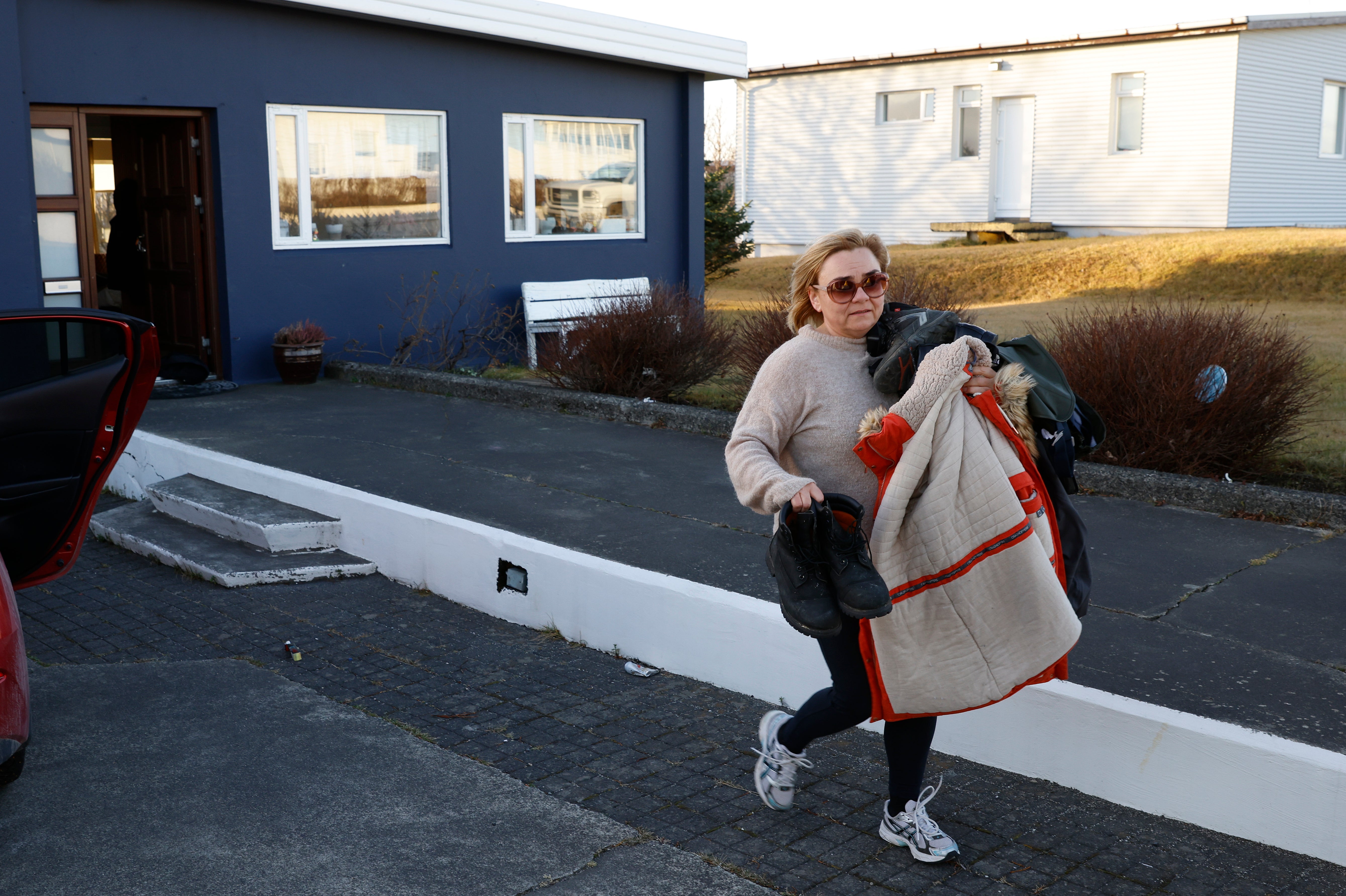
A resident from the town of Grindavik, Iceland, takes some of their belongings from their house
Are flights still running amid fears of volcano eruption?
Despite fears of an impending volcanic eruption, flights from the UK to Keflavik international airport 10 miles north of the eruption site are going ahead as usual.
On Sunday 12 November, all scheduled flights from Heathrow, Gatwick, Luton, Stansted and Manchester landed without incident.
Residents report constant shaking in town of Grindavik
Thorvaldur Thordarson, professor in vulcanology at the University of Iceland, said most recent data indicated a smaller risk of an eruption in the area around the town of Grindavik.
Inhabitants of Grindavik described being whisked from their homes in the early hours of Saturday as the ground shook, roads cracked and buildings suffered structural damage.
Hans Vera, a Belgian-born 56-year-old who has lived in Iceland since 1999, said there had been a constant shaking of his family’s house.
“You would never be steady, it was always shaking, so there was no way to get sleep,” said Vera, who is now staying at his sister-in-law’s home in a Reykjavik suburb.
“It’s not only the people in Grindavik who are shocked about this situation it’s the whole of Iceland.”
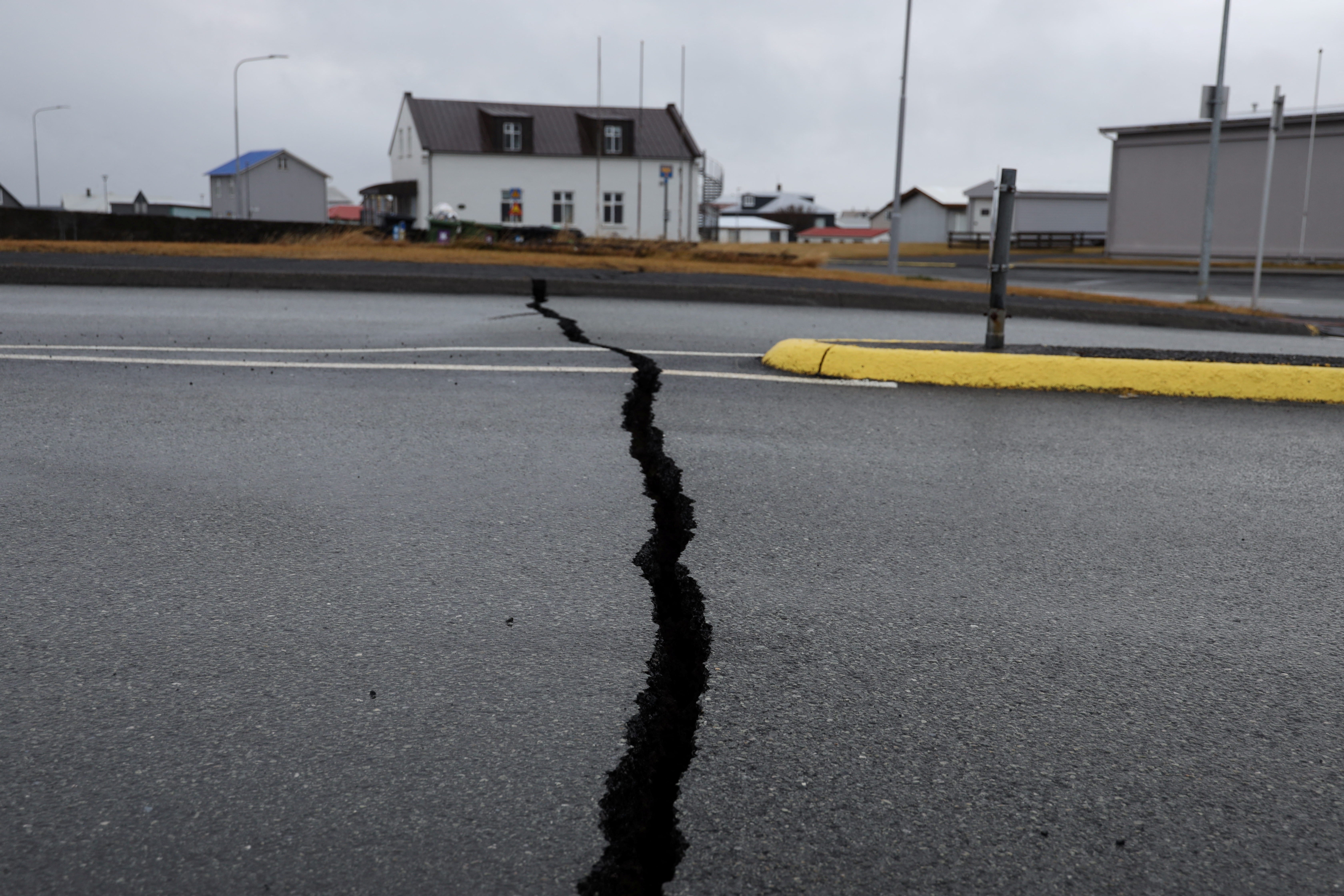
Cracks emerging in the road near Grindavik
What are your rights if you are on holiday or are planning to go?
The town of Grindavík, just 10 miles south of Keflavik International Airport, has been evacuated as a precaution.
Read more from travel correspondent Simon Calder below
How many active volcanoes are there in Iceland
Iceland is accustomed to volcanic eruption and is home to 33 active volcanoes, reported AFP.
Reykjanes peninsula itself has seen three eruptions since 2021, one each year – in March 2021, August 2022 and July 2023.
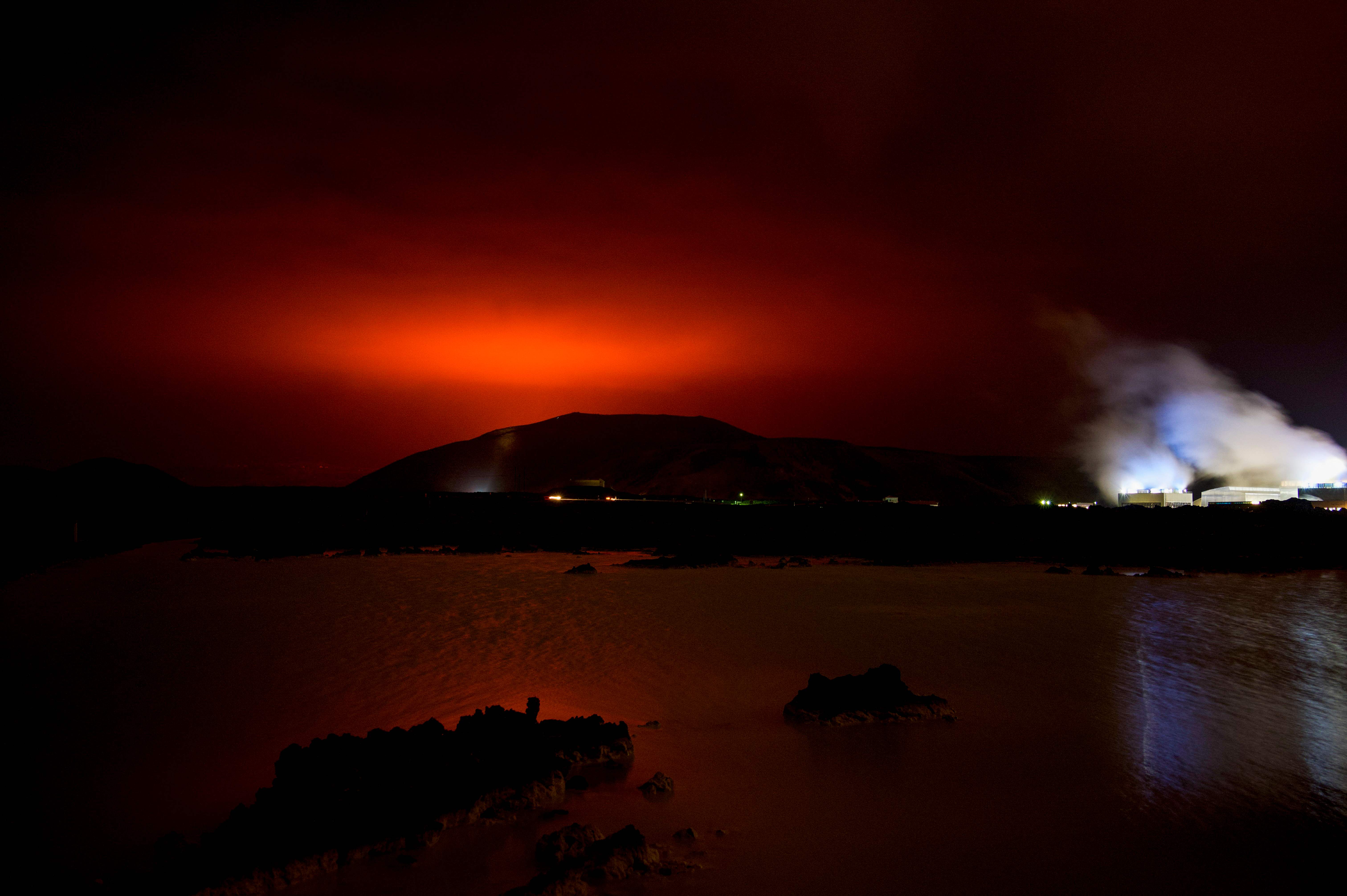
The red shimmer from magma flowing out from the erupting Fagradalsfjall volcano behind the landmark Blue Lagoon, some 45 km west of the Icelandic capital Reykjavik, on 19 March 2021
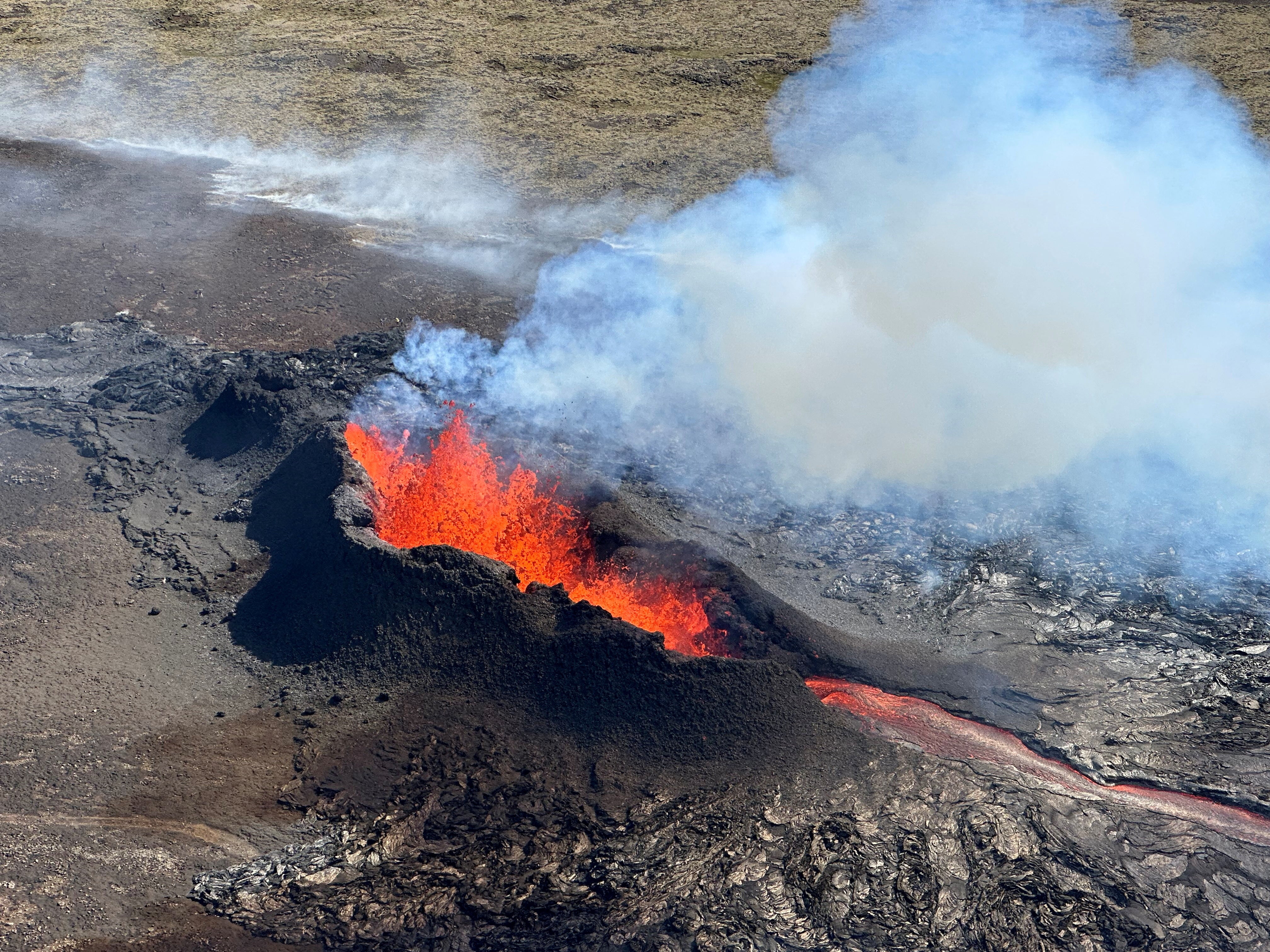
Lava spurts and flows after the eruption of a volcano in the Reykjanes Peninsula
But these three were located away from infrastructure or populated areas. The country is susceptible to earthquakes because it sits on a tectonic plate boundary that continually splits apart, pushing North America and Eurasia away from each other along the line of the Mid-Atlantic Ridge.
A powerful mantle plume, an area that is hotter than the surrounding magma, sits below it, which melts and thins the Earth’s crust, putting Iceland at a constant risk of volcanic eruption.
In pictures: A view of cracks on a road due to volcanic activity near Grindavik
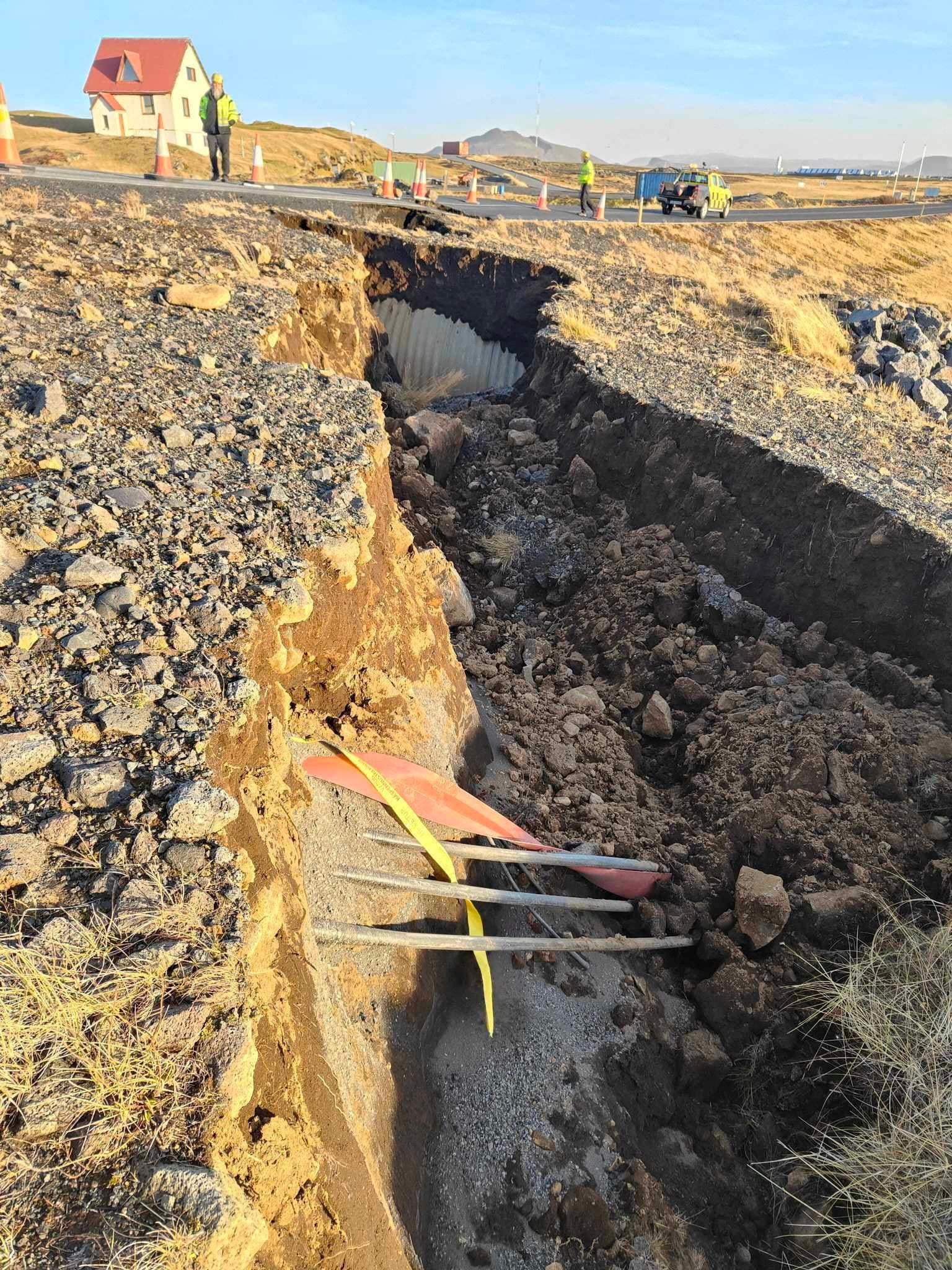
A view of cracks, emerged on a road due to volcanic activity, near Grindavik, Iceland 13 November 2023
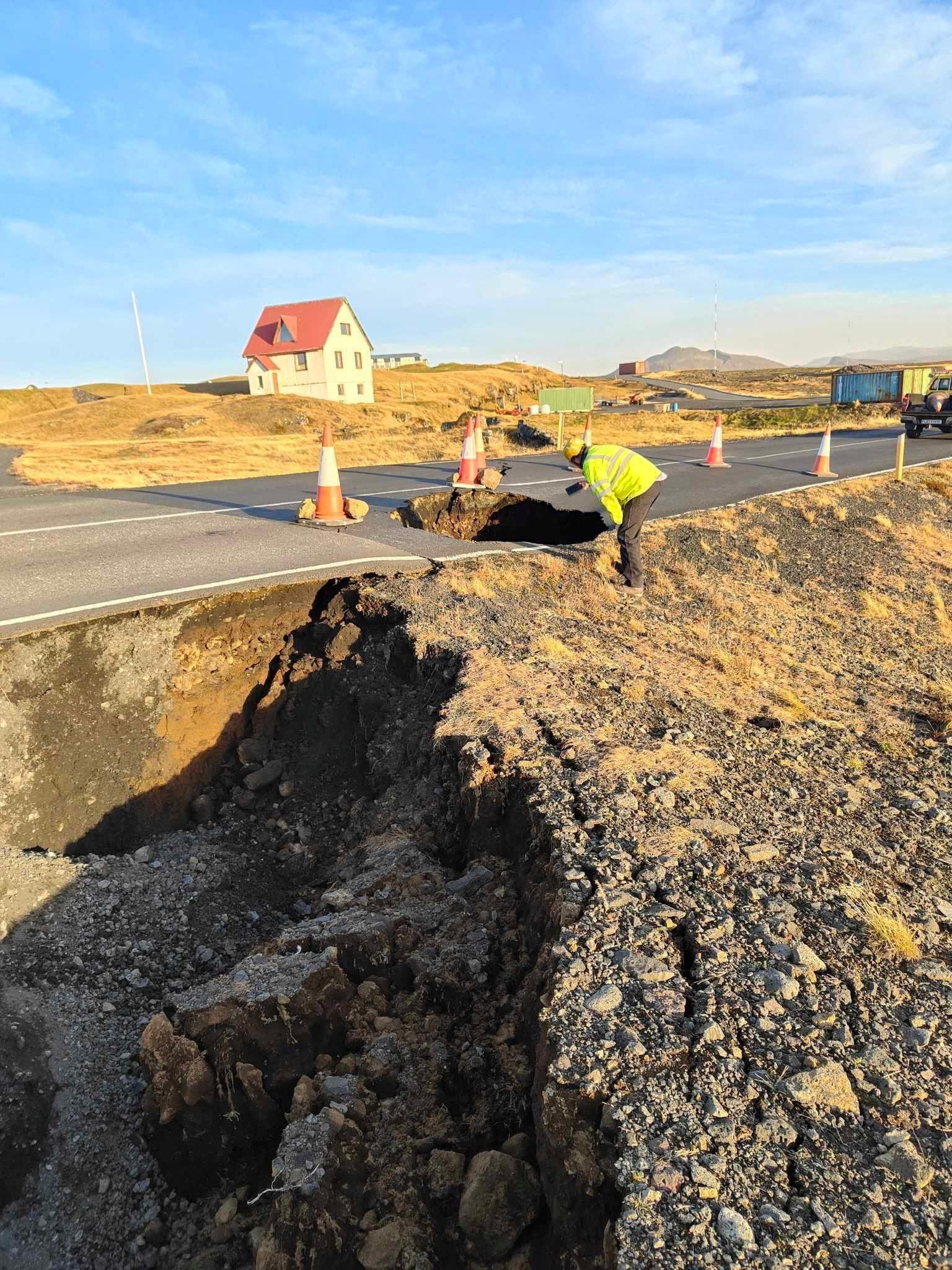
A view of cracks, emerged on a road due to volcanic activity, near Grindavik
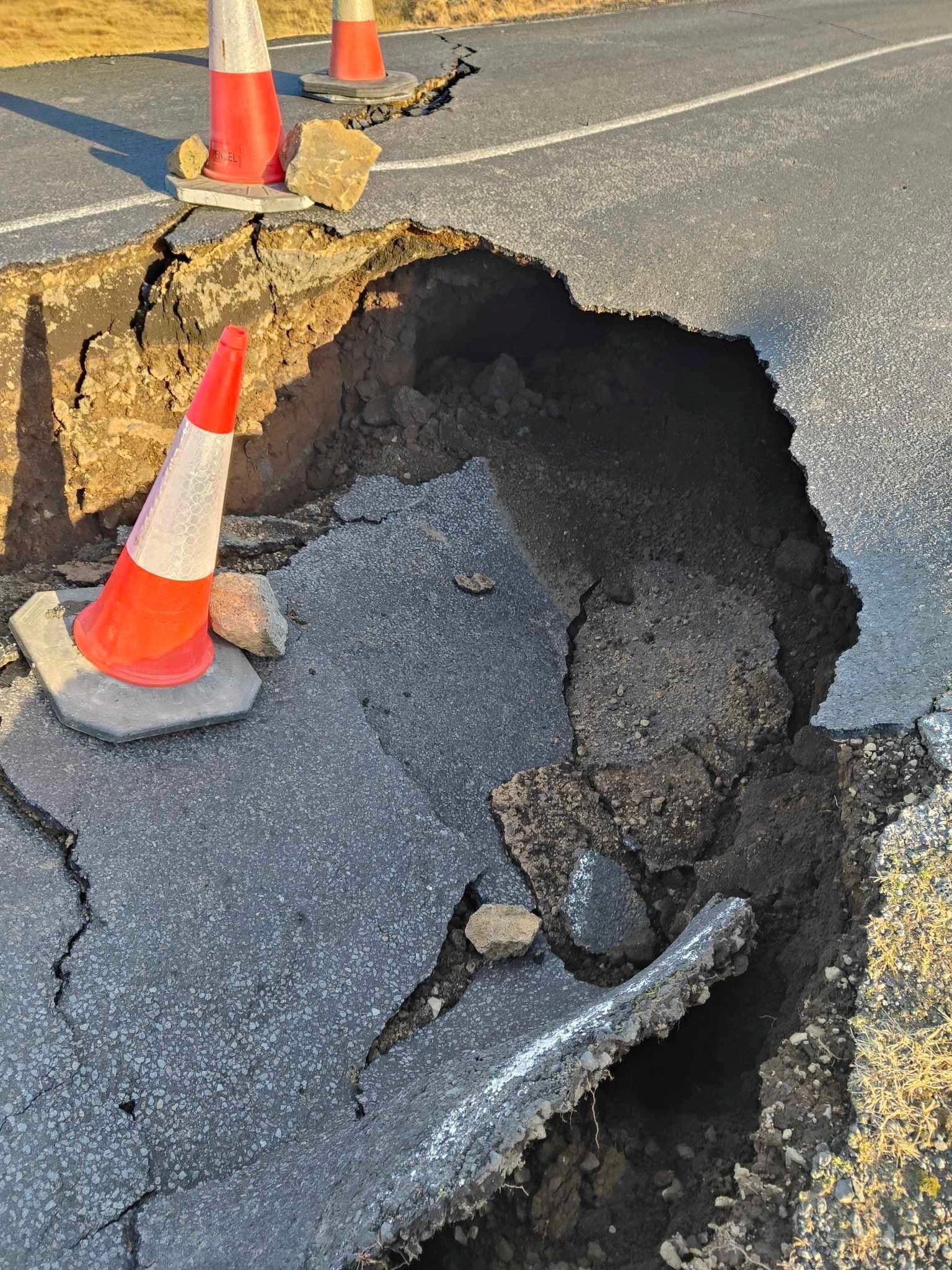
A view of cracks, emerged on a road due to volcanic activity, near Grindavik, Iceland on 13 November 2023
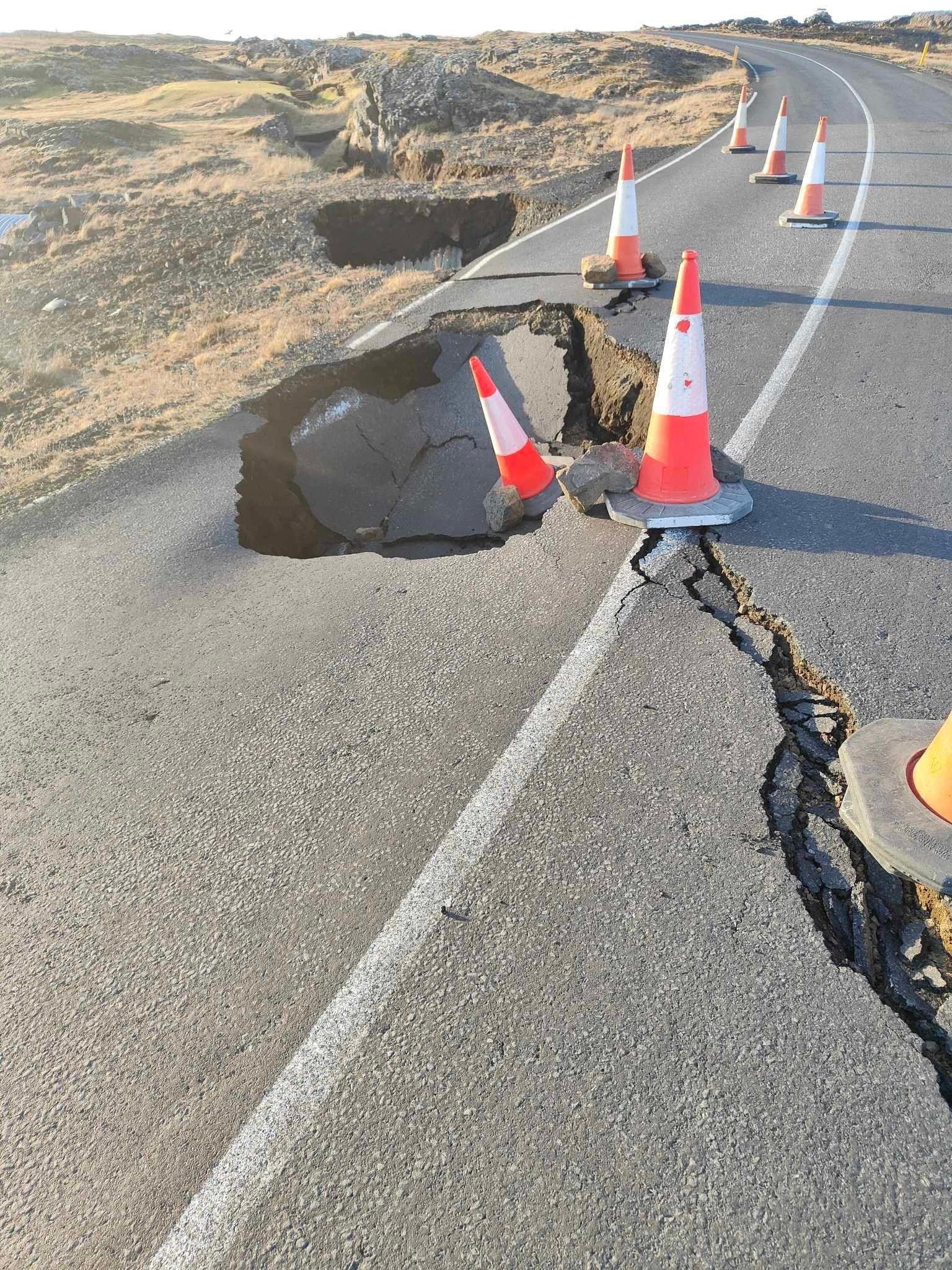
A view of cracks, emerged on a road due to volcanic activity, near Grindavik
Locals return home to collect belongings
Residents of Grindavik were allowed back briefly on Monday to collect their belongings.
Thousands of people were evacuated from the south-western Reykjanes Peninsula over the weekend after the region was hit by hundreds of quakes amid fears of a volcanic eruption.
Pedrag, a native Serb who evacuated with his wife on Friday, said the couple went home on Monday to retrieve some belongings.
An evacuation order for Grindavik was given in the early hours of Saturday.
“If you talk to Icelandic people who have lived there all their lives, they say they have never felt something like that,” he told the BBC.
The police in Suðurnes decided to close Grindavík at 4pm yesterday. People had time until then to collect necessities from their homes before the town was evacuated again.
The Reykjanes peninsula is a volcanic and seismic hot spot southwest of the capital. In March 2021, lava fountains erupted spectacularly from a fissure in the ground measuring between 500-750 metres long in the region’s Fagradalsfjall volcanic system.
Volcanic activity in the area continued for six months that year, prompting thousands of Icelanders and tourists to visit the scene. In August 2022, a three-week eruption happened in the same area, followed by another in July of this year.
Roughly 900 earthquakes rattled Iceland since midnight, many of them reported along a 9-mile magma tunnel running beneath the seaside town of Grindavik, said the Icelandic Meteorological Office on Monday, according to national public service broadcaster RÚV.
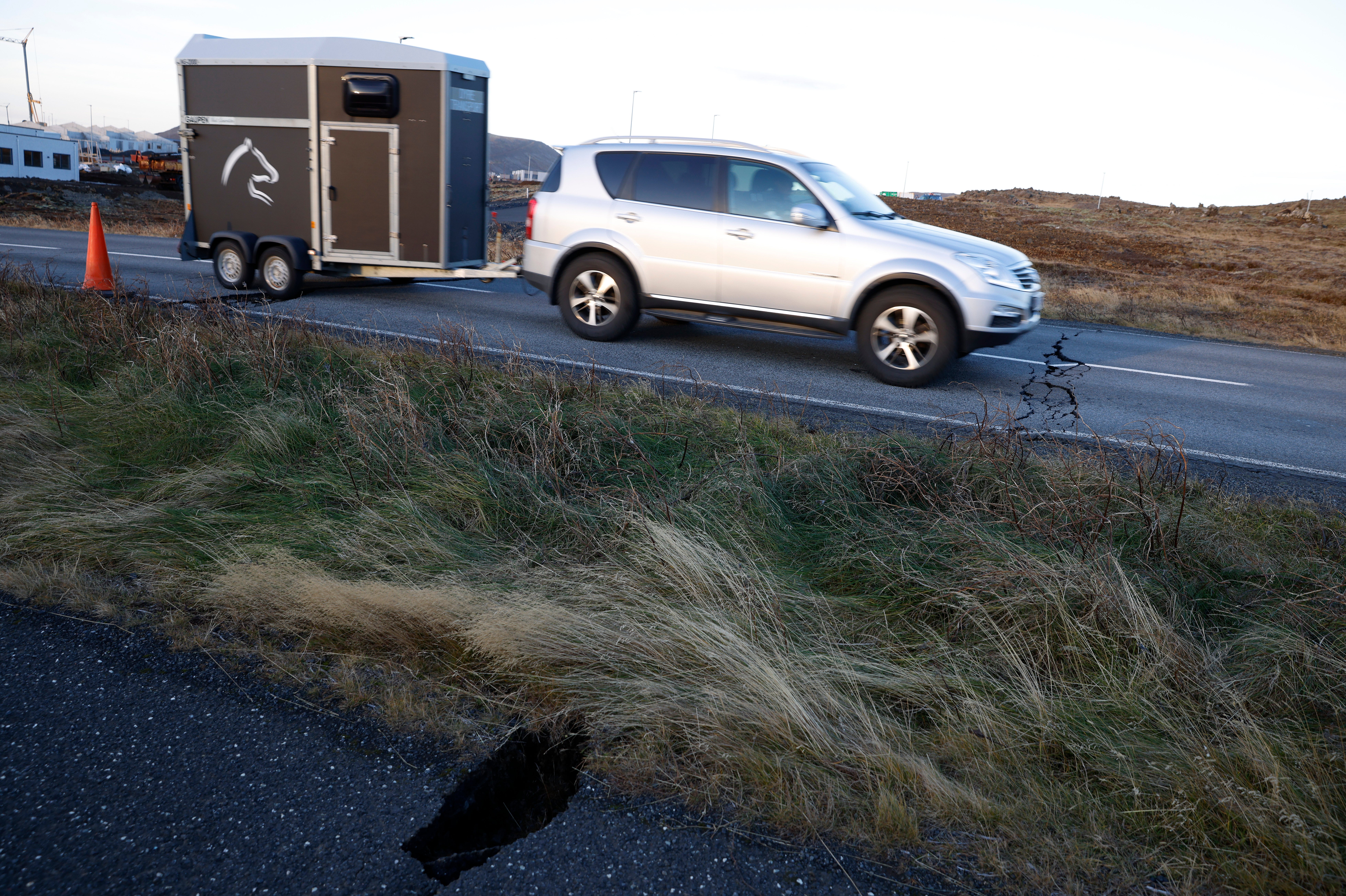
A car drives toward a crack in a road in the town of Grindavik, Iceland on Monday 13 November 2023 following seismic activity
Magma has been measured at a depth of 800m at the shallowest point of a 15km magma tunnel that runs through the town.
Are flights still running amid fears of volcano eruption?
Despite fears of an impending volcanic eruption, flights from the UK to Keflavik international airport 10 miles north of the eruption site are going ahead as usual, report Simon Calder and Lydia Patrick.
https://news.google.com/rss/articles/CBMiaGh0dHBzOi8vd3d3LmluZGVwZW5kZW50LmNvLnVrL25ld3Mvd29ybGQvZXVyb3BlL2ljZWxhbmQtdm9sY2Fuby1lYXJ0aHF1YWtlcy1mbGlnaHRzLXRyYXZlbC1iMjQ0Njc1MS5odG1s0gEA?oc=5
2023-11-14 11:13:18Z
2593683121

Tidak ada komentar:
Posting Komentar